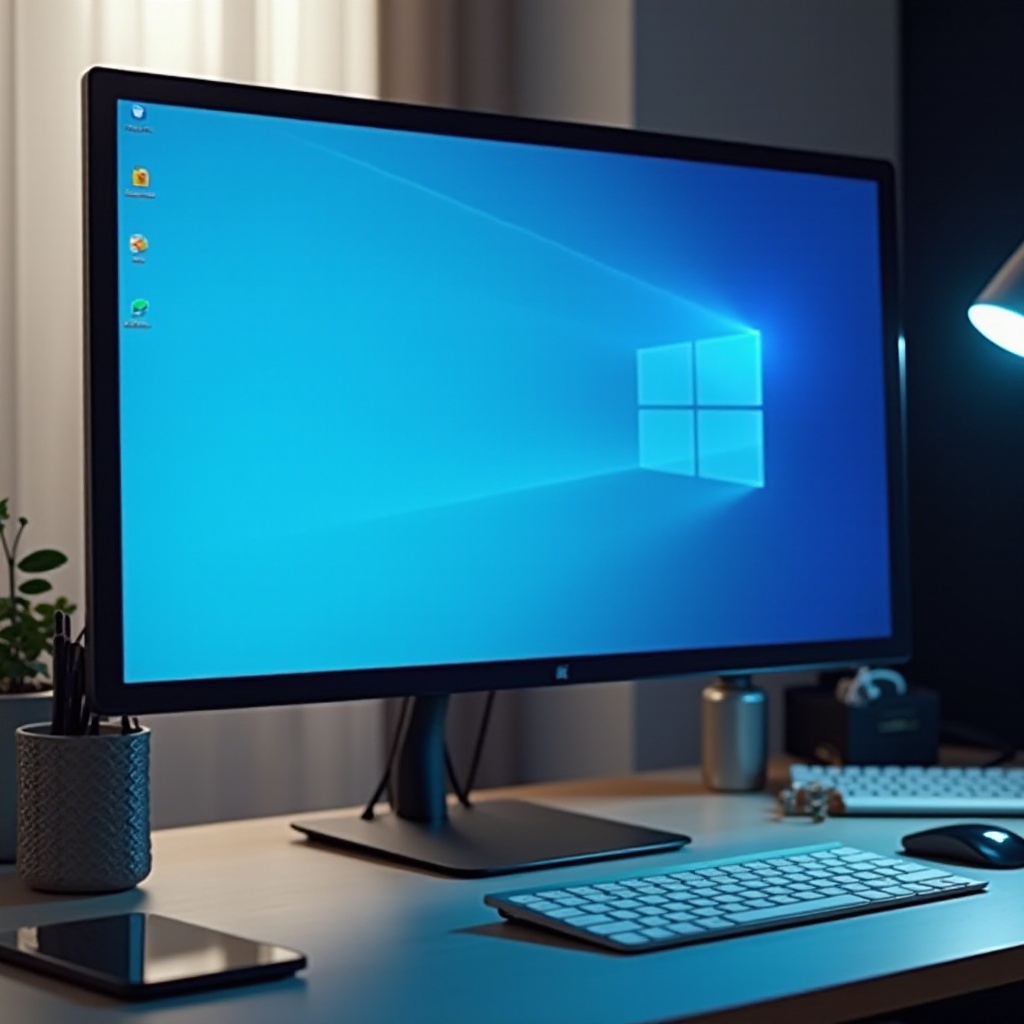Effective Solutions to Fix and Prevent Blue Screen Issues on Computer Monitors
Introduction
A blue screen on your computer monitor can be frustrating, especially when you're in the middle of important work. This issue, often referred to as the 'Blue Screen of Death' (BSOD), signifies a significant problem with your computer system. Understanding, fixing, and preventing blue screen issues is crucial for maintaining a smooth and efficient computing experience. In this blog post, we'll delve into the causes of blue screen issues and provide practical solutions and preventive measures to help you avoid future occurrences.

Understanding the Blue Screen on Monitors
The blue screen is a notorious error screen displayed by the Windows operating system upon encountering a critical system error. This error forces the system to restart, leading to data loss if unsaved. The blue screen conveys various error messages and codes that can help diagnose the issue. However, these messages are often cryptic to the average user.
Understanding the nature of blue screen errors involves recognizing the elements that can lead to this problematic screen. Analyzing the error codes, while challenging, often points towards hardware malfunctions, software or driver conflicts, or overheating components. By familiarizing yourself with these elements, you'll be better equipped to address and prevent blue screen issues.
Common Causes of Blue Screen on Monitors
Several factors can cause a blue screen error on your monitor. By diagnosing these factors, you can effectively address the problem and reduce its recurrence.
Hardware Malfunctions
Defective hardware components are a primary cause of blue screen errors. Faulty RAM, failing hard drives, and malfunctioning motherboards can disrupt your computer's functionality. These hardware issues can create errors that the operating system can't handle, leading to a blue screen.
Software and Driver Issues
Incompatible or corrupted software and drivers can also trigger blue screens. Drivers act as a bridge between your operating system and the hardware. If a driver is outdated or corrupt, it can cause communication errors. Similarly, defective software or faulty updates can interfere with the system's stability, prompting a blue screen.
Overheating Components
Computers are susceptible to overheating due to dust accumulation, poor ventilation, or overworking. Overheating can lead to hardware malfunction or damage, causing your system to display a blue screen. Ensuring your computer stays cool is vital to preventing these errors.
By recognizing these causes, you can take specific actions to fix current blue screen issues and prevent them from recurring.
Basic Troubleshooting Steps
If you encounter a blue screen on your monitor, you can follow several basic troubleshooting steps to resolve the issue.
Checking Physical Connections
Ensure all cables and connections between your monitor and computer are secure. Loose or damaged cables can cause display issues, including blue screens. Check for wear and tear on the cables and replace them if necessary.
Testing with Another Monitor
To determine if the issue lies with your monitor, connect your computer to another monitor. If the blue screen persists on a different monitor, the problem is likely within your computer. If the issue is resolved, your monitor might be faulty.
Updating Graphics Drivers
Outdated or corrupted graphics drivers can cause blue screen errors. Regularly updating your graphics drivers can prevent and resolve these errors. Visit the manufacturer's website to download the latest drivers compatible with your system.
These basic steps can often resolve the issue. However, if the problem persists, you may need to explore more advanced solutions.
Advanced Solutions for Blue Screen Issues
When basic troubleshooting fails, advanced solutions may be necessary to fix blue screen errors.
BIOS and Firmware Updates
Updating your BIOS and firmware can resolve compatibility issues and enhance system stability. Access your computer's BIOS during startup and follow the manufacturer's instructions for updating. Ensure you're using the correct BIOS version to avoid additional issues.
Resetting System Settings
Corrupted system settings can also lead to blue screen errors. Perform a system reset to restore your computer to its default settings. This can resolve conflicts caused by recent updates or software installations. Ensure you back up your data before resetting your system.
Replacing Faulty Hardware Components
If a specific hardware component is causing the blue screen, replacing it may be necessary. Testing individual components can help identify the faulty part. RAM and hard drives are common culprits and can be replaced relatively easily. Consult a professional technician if you're uncertain about performing hardware replacements.
Implementing these advanced solutions can resolve persistent blue screen issues and restore your computer's stability.

Preventive Measures to Avoid Blue Screen Issues
Preventing blue screen errors is crucial for maintaining your computer's performance and efficiency.
Regular System Maintenance
Perform regular maintenance tasks such as system updates, disk cleanup, and antivirus scans. Keeping your system updated and clean can prevent software-related blue screen errors.
Ensuring Proper Ventilation
Preventing overheating is essential. Use your computer in a well-ventilated area and clean the vents regularly. Invest in additional cooling systems if necessary to maintain optimal temperatures.
Using Quality Surge Protectors
Power fluctuations can damage your computer's hardware, leading to blue screens. Use quality surge protectors to safeguard against power surges and prevent hardware malfunctions.
By implementing these preventive measures, you can significantly reduce the likelihood of encountering blue screen errors.

Conclusion
Blue screen errors can disrupt your workflow and cause significant frustration. Understanding the causes and implementing the right solutions can help resolve these errors. Additionally, preventive measures can safeguard your computer against future occurrences. By following the steps outlined in this guide, you can ensure a smoother, more reliable computing experience.
Frequently Asked Questions
What does a blue screen on my monitor mean?
A blue screen indicates a critical system error that the Windows operating system cannot recover from without restarting. It often points to hardware malfunctions, software conflicts, or overheating.
Can a blue screen be a sign of a serious problem?
Yes, a blue screen can indicate serious issues such as failing hardware or significant software conflicts. Promptly addressing and diagnosing the problem is crucial to prevent further damage.
How can I prevent blue screen issues in the future?
Regular system maintenance, proper ventilation, and using quality surge protectors are effective preventive measures. Keeping your drivers and system updated also helps avoid potential conflicts.



